What is a non-toxic mattress? What does this label mean? Nowadays, almost everything has a label. Each item we purchase probably has a certain tag on it. It is either placed in a so-called ‘box’ or category, to indicate the characteristics, quality, or specific information about the product. For example, when reading the details on food packaging we find such terms as sugar-free, additive-free, non-GMO, gluten-free, lactose-free, vegetarian, vegan – and the list goes on. This is similar to mattresses, but they can be a bit tricky.
This article is designed to help you clarify the description ‘non-toxic’, and how it relates to mattresses and your health. Hopefully, after having read through the following paragraphs, you’ll be better informed to decipher the label.
What is a non-toxic mattress?
For some, the term ‘non-toxic’ might not be clear. According to the Cambridge Dictionary website, ‘non-toxic’ means that something is ‘not poisonous or not containing poisonous substances’. How does this relate to mattresses?
It is widely known that volatile chemicals are often involved in the manufacturing process of the most conventional mattresses. Sadly, this means that a lot of mattress companies are not conscientious about their products regarding health and the environment.
The label ‘non-toxic’ is often used in conjunction with adjectives such as ‘green’, ‘organic’ or ‘eco-friendly’. Non-toxic or in other words chemical-free mattresses are void of harmful substances, such as chemical fire retardants.
Companies that label their mattresses as non-toxic, generally use natural components like natural latex, cotton, and wool in the production of their mattresses.
To begin with, natural latex is harvested from the sap of the rubber tree, that goes through a highly sustainable manufacturing process.
Apart from natural latex, synthetic latex is produced as an alternative, but this variant is often made using toxic chemicals that are not safe. All-natural Dunlop and Talalay latex mattresses on the other hand are safer options since they are not treated with any chemicals that could possibly pose health risks.
It’s very important to watch out for all the materials a mattress contains. Often, it might not be evident how a product has earned the claim of being non-toxic, because the mattress company may use natural, organic materials in their product only as a component and consequently, not 100 percent of the product is organic.

Dangerous mattress additives
One of the most surprising things is toxic chemicals are hugely common in conventional mattresses. They are off-gassing harmful chemicals posing hazards to your health. Now let’s see the most common dangerous mattress additives.
Polyurethane Foam
Polyurethane foam or polyfoam has been a common fill for many mattresses in the past 60 years. You may not know, but most memory foam mattresses are created using polyurethane. However, this material comes with many health concerns.
Why is polyurethane foam a dangerous mattress additive? Unfortunately, this type of material is responsible for a huge amount of off-gassing of VOCs (volatile organic compounds). You can find this material in memory foam mattresses, hybrid mattresses, or in some innerspring mattresses.
Polyurethane foam is created by using polyols which is a type of chemical. If you are exposed to polyols, you may experience allergy-type reactions. Some people experience headaches, dizziness, nausea, or trouble concentrating. Though for many these symptoms may seem to be mild, remember that you sleep on your mattress every day and these symptoms won’t go away.
Chemical Flame Retardants
Every mattress is required to be fire resistant to meet safety standards. The main goal is to prevent the start or slow down the growth of the fire. Mattresses, that are not natural, contain fire retardants that can have adverse health effects.
The most common chemical flame retardants used in mattresses are the following:
-
Brominated flame retardants
-
Polybrominated diphenyl ethers (PBDEs)
-
Tetrabromobisphenol A (TBBPA)
Of course, not all fire retardants are a cause of serious concern, but the following are considered the most threatening:
-
Boric acid
-
Polybrominated diphenyl ethers (PBDEs)
-
Antimony trioxide
It’s important to know that fire retardants can have many negative impacts. They are associated with long-term health effects affecting your kidneys, cardiovascular health, or fertility.
If possible, one should avoid sleeping on a mattress containing these materials and instead, switch to a non-toxic mattress, as they are naturally fire-resistant, and they do not contain any toxic fire retardants to meet the safety requirements. Materials, like wool, natural latex or organic cotton are all safer options for your and your family’s health.
Vinyl
Did you know that vinyl is a common material in mattresses made for babies?
Vinyl relies on many toxic chemicals during the manufacturing process. These include asthma triggers and even cancer-causing chemicals. Vinyl is frequently used to produce waterproof layers or covers. However, you should avoid mattresses that excessively contain this material.
If possible, always go for mattresses that are organic and non-toxic.
Non-toxic mattress certifications

Natural latex mattresses are the most popular non-toxic mattresses. They contain very little or no additives, and the rubber trees are not contaminated by pesticides or herbicides. It is also a hypoallergenic material that is resistant to dust mites.
When purchasing a mattress, look for the GOLS (Global Organic Latex Standard) icon which ensures the product is verified by an official organisation. This certification indicates that the latex mattress foam is at least 95% organic, meaning that the rubber trees were grown and harvested with sustainable methods and that toxic additives were not used.
Apart from latex, another natural material frequently used in non-toxic mattresses is cotton. Cotton is naturally hypoallergenic, breathable, and soft.
Of course, it is important to bear in mind that some cotton may have been treated with pesticides and herbicides. It is important once again to make sure that the mattress you’re about to purchase is proven to be from a reliable source.
If a product has the GOTS (Global Organic Textile Standard) certification, it guarantees that the fabrics in the mattress are at least 95 percent organic. You should be sure that the entire mattress is certified by GOTS, not only an individual component.
The benefits of non-toxic mattresses

Several benefits come with the use of non-toxic mattresses:
1. They are comfortable
Many people report that they wake up feeling refreshed and well-rested after sleeping on a non-toxic mattress. Undoubtedly, an organic mattress will give you all the comfort you need for a restful night’s sleep.
These mattresses are constructed from the highest quality materials in order to give you a supportive sensation. If you have sore joins or your pressure points are overstressed, organic mattresses are an excellent choice.
In order to find the best mattress, it must accommodate your sleeping position. You may check here to see which firmness level is best for your sleeping position.
2. Non-toxic mattresses repel dust mites and are great for people suffering from allergies
Dust mites are a common issue in many families. They can be dangerous for your health since they can trigger allergy reactions. If you already suffer from allergies or asthma, they can worsen it. It might be frightening to hear it, but their favourite place to live in is your mattress.
If you want to avoid dust mites, choosing non-toxic, organic mattresses is the best decision. They are breathable, do not contain moisture, and don’t trap dead skin cells or pet dander. As a result, dust mites cannot thrive in them.
All in all, non-toxic mattresses do not attract bacteria and allergens. They do not absorb moisture, so they are perfectly healthy to sleep on.
3. Non-toxic materials are mould resistant
Typically, organic mattresses are the best types of mattresses to resist mould growth.
Any materials that absorb moisture, can develop mould. It’s important to know that when you are asleep, your body temperature rises. In order to cool itself, the human body perspires. Therefore, we lose quite a lot of water during the night. This isn’t absorbed only by our clothes and sheets, but by the mattress itself as well. As a result, we create a great environment for mould to grow.
In order to avoid mould, it might be a good idea to invest in a non-toxic, organic mattress that allows air to flow freely through the mattress, providing sufficient ventilation to prevent moisture from building up in your bed.
4. Non-toxic mattresses are cooler and more breathable
By now you might know that organic mattresses are cooler and more breathable, due to all the great qualities mentioned above. However, this feature is so important that it needs to be emphasized.
Since air is allowed to circulate freely through natural mattresses, they can breathe very well providing a cooler sleeping surface.
5. They have a longer lifespan
The more natural components a mattress has, the longer it will last. Conventional mattresses have an average lifespan of 6 years, while non-toxic mattresses such as natural latex can last as long as 20 years.
Though many say that natural latex mattresses are quite expensive, it’s important to remember that they are a great investment in the long run.
6. Non-toxic mattresses are better for the environment
Non-toxic mattresses are manufactured using environmentally friendly methods. They also contain sustainable and biodegradable materials, and you use them much longer, so you can easily reduce your carbon footprint by investing in a non-toxic mattress.
All things considered, a non-toxic mattress uses materials that are a lot safer for you while you are asleep.
Closing thoughts
In conclusion, non-toxic mattresses are better alternatives to opt for in general, because they don’t contain questionable substances. Instead, they use natural materials that aren’t harmful to our health and don’t burden our planet. With this in mind, hopefully, you’ll be able to understand commonly used descriptions and as a result, will be better placed to make your choice when buying a mattress.
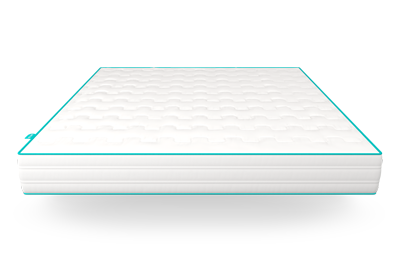 Original Mattress
Original Mattress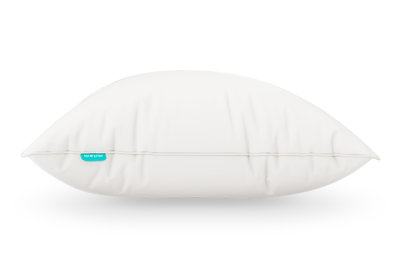 Alpaca Wool Pillow
Alpaca Wool Pillow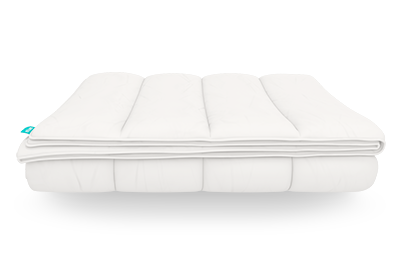 Alpaca Wool Duvet
Alpaca Wool Duvet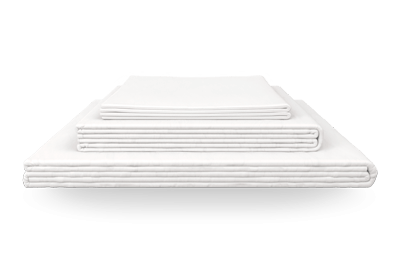 Bed sheets
Bed sheets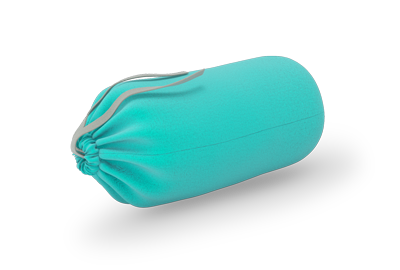 Protector
Protector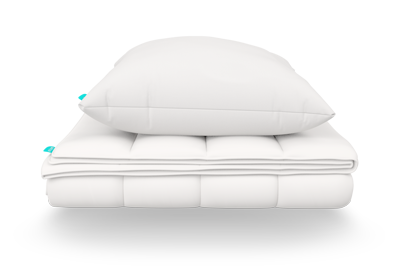 Sets
Sets